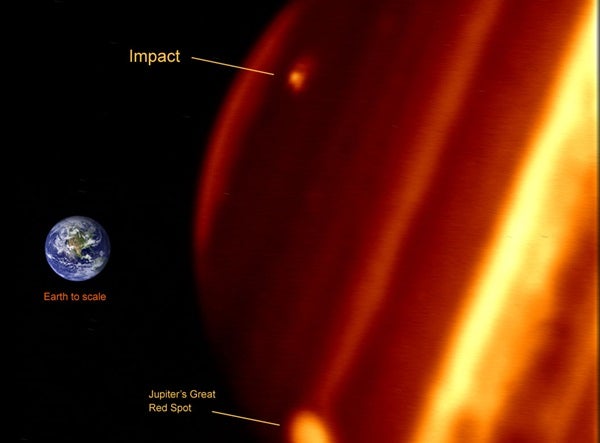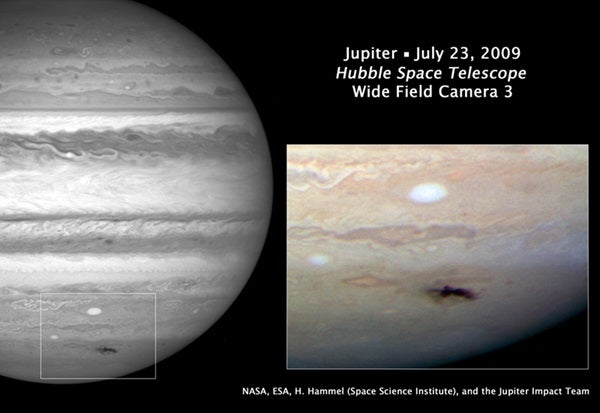New pictures of Jupiter and its recent impact site keep pouring in, showing the rapidly growing atmospheric aftermath in increasingly greater detail. First discovered by Australian amateur astronomer Anthony Wesley on July 19, the Pacific Ocean-sized black spot is likely the result of a collision with an asteroid or comet.
The W. M. Keck Observatory, located on Hawaii’s Mauna Kea volcano, confirmed the impact last week with a set of infrared images. Astronomers there plan to test theories developed 15 years ago during Comet Shoemaker-Levy 9’s impact with the gas giant, the only other planetary collision ever witnessed.
Operators of the Keck and Hubble telescopes originally scheduled other work for the week but decided to postpone their plans to better study the unfolding events on Jupiter. They join a multitude of amateur and professional astronomers across the world now training their eyepieces on the planet’s constantly changing spot.
NASA scientists estimate the colliding object was several hundreds of yards across and the force of its impact to have been thousands of times greater than the explosion in 1908 over the Siberian Tunguska River Valley.
Related blogs:
- “Fair or foul: Public reaction to news of Jupiter impact,” by Bill Andrews, Assistant Editor
- “Astronomy contributor images new Jupiter impact site,” by Karri Ferron, Copy Editor











